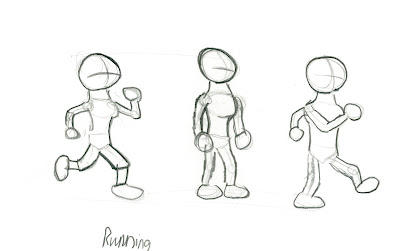Level
Design:
This section talks about the actual design of the level. This is only
the first draft of the level design. The image below shows the icons of that
are shown on the level.

- Player
Character Start: Where the main character starts in the level.
- Enemy
Sword Samurai: A common close combat enemy that can be defeated within
three hits.
- Enemy
Archer Samurai: A foe that snipes from a distance although a single hit
will be able to beat them.
- Enemy
Spear Samurai: Opposing warrior that are equipped with a spear which can
attack the player from mid-range. They take about six hits to defeat them.
- Unlock
Door: Doors that can be open with just a touch of ‘E’ button.
- Event
Door: Doors that only open when the player manages to do a certain event.
- Stairs:
Players can go up and down a floor.
- Fire:
Touching this will cause the player to deal damage but is useful when solving
problems.
- Switch:
Use to activate event doors. Using the Yumi bow with arrows does the trick
- Fire
Switch: Use to activate event doors however; the player must use the Yumi
arrows combine with fire to switch it on.
- Time Switch Panel: When a player stands on
this it will activate switches mentioned earlier; however it only last thirty
seconds.

Part
1: This is the first part of the level. The player’s first objective is to
wipe out all the enemies in between the towers. The player starts on the cliff
and can either snipe from the cliff or go down the stairs and fight the enemies
off by using her sword. Once all the enemies are wiped out the player character’s
remaining forces come down from and tells the player that they will enter one
of the towers. The players can decide which tower to take on. If the player
chooses Tower A then the door to Tower A opens and the player is able to proceed;
if the player selects Tower B then the door to Tower B opens and the player is
able to proceed. When either Tower A or Tower B is completed the player can
move on to Tower C. Two archers will
fire at the player. The player can either retaliate or head straight forward.

Tower
A: Tower A has two floors. The player will see two spearmen which the
player can either avoid or defeat them. The player then sees a puzzle that must
be solved in order to open the locked door. Pressing the time switch panel on
the right unveils the switches that open the locked; however the player has
only has thirty seconds to shoot them all. If fail the switches reset
themselves. When all the switches are shot by the player’s arrows the door is
able making the second floor available.
The second floor contains four
spearmen and the flame switch that needs to be activated. A cut scene reveals
that the front gate is open. The remaining forces guard the area the player was
before.
Tower
B: Tower B has 2 floors. Floor one has only the stairs to proceed, however
floor 2 contains a puzzle to solve. The player must activate the flame switch
which is far away and must proceed using the narrow paths. Some of the floors
are missing and needs to activate by turning on the switches. The first switch
is on the left side of the narrow path and when turned on missing floor
appears. The second switch is on the
right side on the narrow path which when turned the player is able to turn on
the fire switch. A cut scene appears telling the player that the front gate is
open and the player can begin the second part of the level.

Tower
C: Tower C has two floors. The player can pass through the first floor of this
tower if wish to choose to however; it will be wise to do this. The first floor
contains an archer, a sword enemy, a spear enemy and stairs which lead to the
second floor. The second floor contains two archers and a swordsman. Defeating
the enemies will give the player a nice sniping point to take out the archer on
the second part of the level.
Part
2: The player enters the bridge however; a swarm of archers appear (six
outside). The player must dodge enemy fire at the moment because they are out
of range. The player must go to Tower D to finish the archers off. The player
will be able to proceed to part 3 once out of Tower D.
Tower
D: Tower D only contains two floors; the first floor containing two
archers, two spearmen, two swordsmen and stairs that connect to the second
floor, while the second floor contains two archers and a spearman. Once
defeated, the player can use this as sniper point to get rid of the archers
outside.
The final part of the level enters a cut scene where the
boss of the level comes out of the gates and challenges the player to fight.
The doors are locked and the only way that it will open is to knock the boss
into the water that surrounds the area. Once cleared, the gate will open;
however they are six archers that will fire at the player. The player can
either shoot the archers or run to the goal.
This is level for the pitch finished. Changes will possibly be made when the project is finished.




























